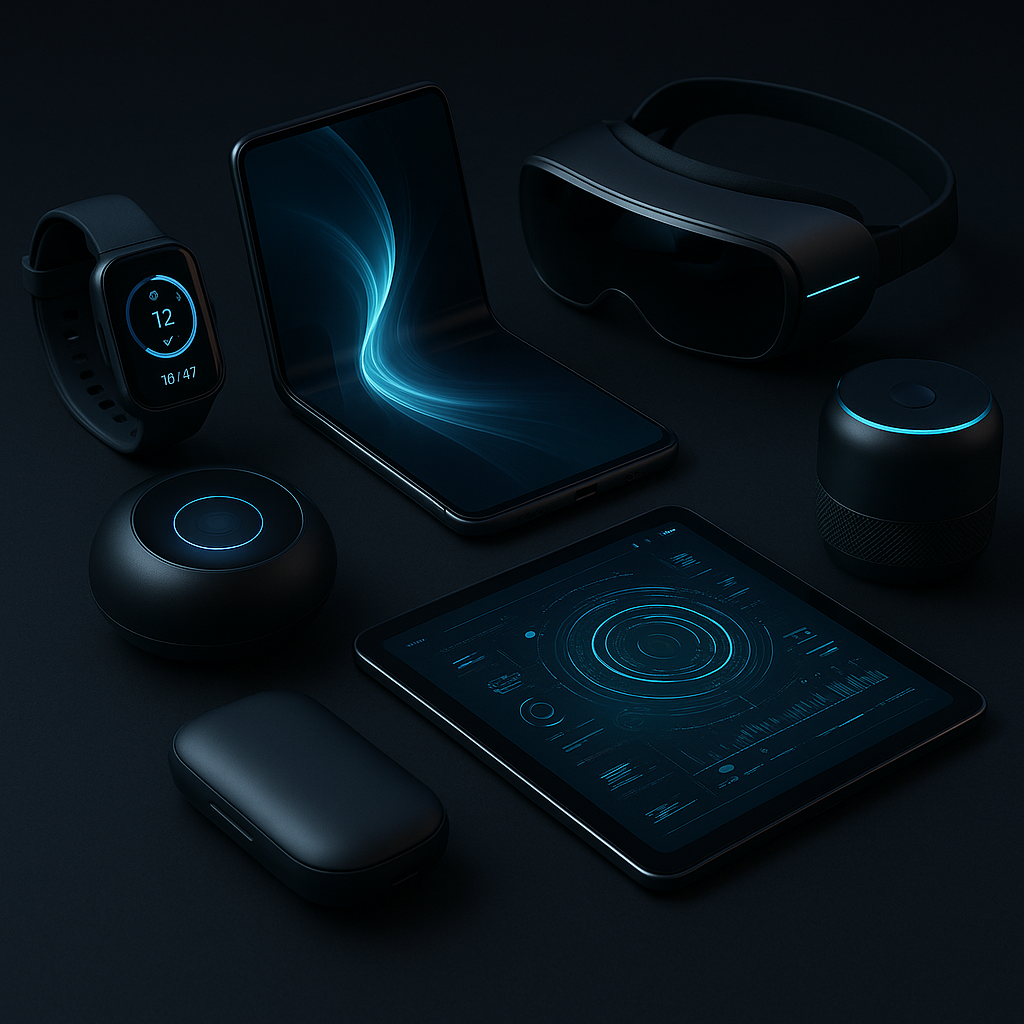In today’s fast-paced, tech-driven world, gadgets have become essential tools that influence nearly every aspect of our lives. From smartwatches that monitor our health to voice-controlled assistants that manage our homes, modern gadgets are no longer mere luxuries—they’re integral to how we communicate, work, and live.
A Brief History of Gadgets
The word “gadget” once referred to a small mechanical device with a particular function. Over the past few decades, however, the definition has expanded to include electronic devices that simplify tasks, entertain, or enhance productivity. From the Sony Walkman in the 1980s to the first iPhone in 2007, gadgets have consistently pushed the envelope of convenience and innovation.
Today, gadgets are smarter, more compact, and more interconnected than ever before. They are embedded with artificial intelligence, powered by the cloud, and connected through the Internet of Things (IoT), transforming them from isolated tools into parts of a larger, dynamic ecosystem.
Essential Gadgets of 2025
As of 2025, here are some of the most significant categories of gadgets reshaping our lives:
1. Smartphones
Despite being around for over a decade, smartphones continue to evolve. The latest models boast foldable displays, 200-megapixel cameras, AI-powered photography, and lightning-fast 5G connectivity. Devices like the Samsung Galaxy Z Fold5 and iPhone 15 Pro Max exemplify how smartphones remain the centerpiece of digital life, combining communication, photography, gaming, and productivity into one sleek device.
2. Wearables
Smartwatches, fitness trackers, and even smart rings are enabling users to track everything from steps and heart rate to stress levels and sleep patterns. The Apple Watch Series 9 and the Oura Ring Gen3 are top examples, offering real-time health insights and seamless integration with other smart devices.
Wearables are no longer limited to fitness—they’re becoming health-monitoring tools capable of detecting arrhythmias, blood oxygen levels, and even early signs of illness.
3. Smart Home Devices
Gadgets like Amazon Echo, Google Nest Hub, and smart thermostats like Ecobee have revolutionized home management. Users can now control lighting, temperature, security, and entertainment systems using voice commands or apps. These devices not only make life more convenient but also help reduce energy consumption and improve safety.
4. Portable Entertainment
Tablets, e-readers, and handheld gaming consoles have surged in popularity. Devices like the Nintendo Switch OLED and Valve’s Steam Deck blend powerful hardware with portability, enabling gamers and content consumers to enjoy their favorites on the go. Meanwhile, Amazon’s Kindle Scribe offers a paper-like experience for reading and note-taking.
5. Augmented and Virtual Reality (AR/VR)
Gadgets like the Meta Quest 3 and Apple Vision Pro are spearheading the immersive tech movement. VR is no longer confined to gaming—it’s being used in education, design, remote collaboration, and therapy. Augmented reality, on the other hand, is enhancing live navigation, shopping, and training experiences.
6. AI-Powered Assistants
Whether built into smartphones or housed in smart speakers, AI assistants like Siri, Alexa, and Google Assistant are getting smarter. They can anticipate user needs, offer suggestions, and execute complex commands like setting routines, managing smart devices, and retrieving personalized information.
How Gadgets Are Transforming Our Lives
1. Work and Productivity
Remote work has accelerated the adoption of gadgets like noise-canceling headphones, webcams, mechanical keyboards, and multi-device wireless mice. Laptops like the MacBook Pro M3 and Surface Laptop Studio provide desktop-grade performance in a portable form factor.
In addition, gadgets such as portable projectors and USB-C hubs offer flexibility in creating mobile workstations anywhere.
2. Health and Wellness
The rise of health-centric gadgets has given users unprecedented insight into their bodies. Gadgets like the Whoop strap or Withings Body Smart Scale provide detailed analytics that go far beyond traditional health monitoring. Coupled with apps, users can set wellness goals, track progress, and share data with healthcare providers.
3. Environmental Impact
Eco-friendly gadgets, such as solar-powered chargers and energy-efficient smart plugs, are growing in popularity. Companies are also integrating sustainability into gadget design by using recycled materials and creating modular products that are easier to repair and upgrade.
4. Education and Learning
Educational gadgets are making learning more interactive and personalized. Tablets with styluses, coding robots like Sphero Bolt, and AR learning apps are redefining classrooms and homeschooling. These tools cater to different learning styles and help improve engagement, especially among younger users.
The Challenges of a Gadget-Driven Society
While gadgets offer incredible benefits, they’re not without downsides. Overreliance can lead to issues such as screen addiction, reduced face-to-face interaction, and data privacy concerns. Additionally, electronic waste is a growing problem, as millions of devices are discarded each year without proper recycling.
To address these concerns, manufacturers and consumers alike must adopt more responsible practices. This includes longer support cycles, recyclable packaging, and the right-to-repair movement.
What’s Next?
The future of gadgets is pointing toward greater integration, personalization, and sustainability. Here are a few trends to watch:
- Wearable AR glasses replacing smartphones as primary communication tools.
- Brain-computer interfaces allowing gadgets to be controlled by thoughts.
- AI companions becoming more emotionally intelligent.
- Quantum-powered processors for faster and more secure gadget operations.
We may also see more emphasis on modular gadgets—devices that can be upgraded or repaired by swapping components—helping reduce waste and extend lifespans.
Conclusion
Gadgets have evolved from simple tools into essential components of modern life. They empower us to connect, create, learn, and thrive. As technology continues to progress, the challenge lies not just in creating more powerful devices, but in ensuring they enrich our lives in ethical, sustainable, and meaningful ways.
Whether it’s the smartwatch on your wrist, the smart speaker in your kitchen, or the foldable phone in your pocket, gadgets are not just shaping the future—they are the future.

